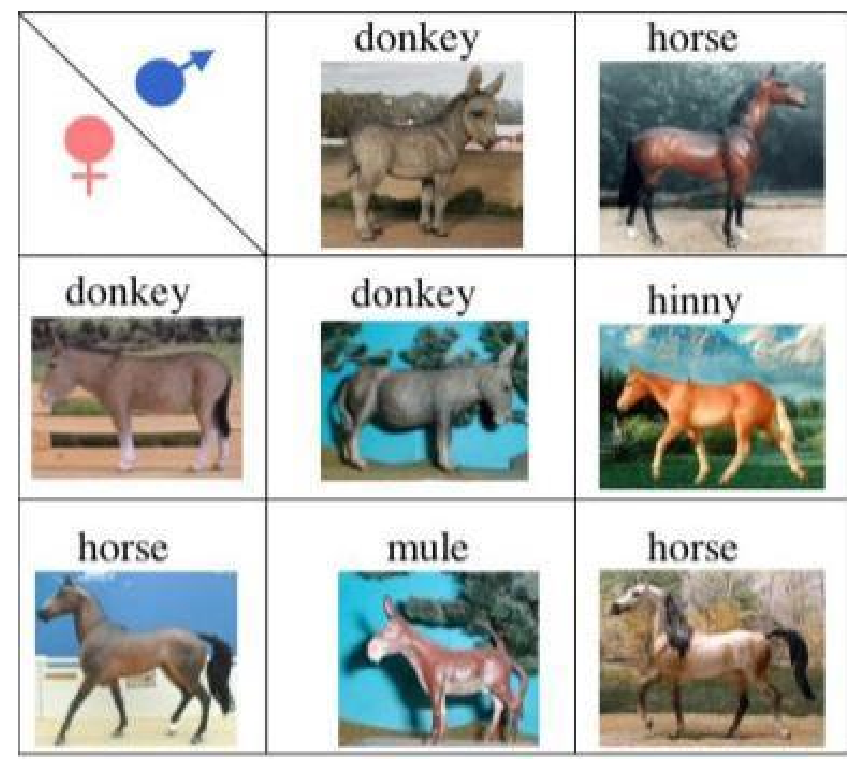L06 Variation in Chromosomes Structure and Number reversed version
一、Introduction
Genetic variation refer to differences in DNA between individuals or to differences between populations. Mutation is the ultimate source of genetic variation.
Allelic variations are due to mutations in particular genes
Chromosomal aberrations are substantial changes in chromosome structure or number
- These typically affect more than one gene
- They are quite common, which is surprising
Karyotype
A karyotype (核型) is the complete set of all chromosomes of a cell.
The chromosomes are arranged and displayed in a standard format: in pairs, ordered by size.
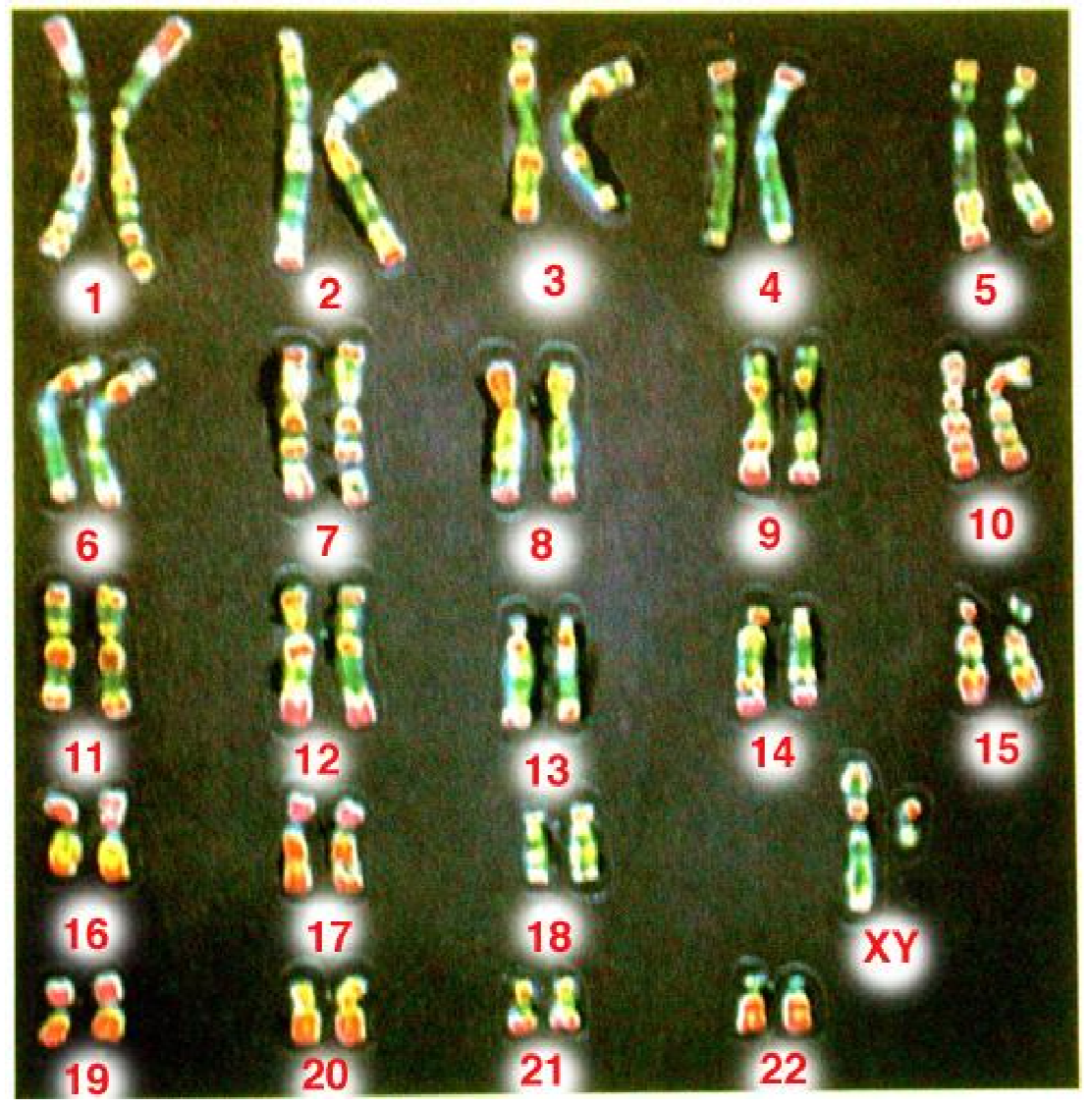
identify and classify chromosomes
- Location of the centromere:

- Size
- Banding Patterns: The characteristic pattern of light and dark transverse bands on a stained chromosome (as viewed under a microscope), and describes the location of genes
Banding Patterns
由于两条染色体可能具有相似的size和着丝点位置,可以通过染色使得染色体呈现明暗不易的条带,从而进行比较识别
1. 例:G-banding
Chromosomes are exposed to the dye Giemsa
- Some regions bind the dye heavily (Dark bands)
- Some regions do not bind the dye well (Light bands)
Heterochromatic regions, which tend to be rich with adenine and thymine (AT-rich) DNA and relatively gene-poor, stain more darkly in G-banding.
In contrast, less condensed chromatin (Euchromatin) —which tends to be rich with guanine and cytosine (GC-rich) and more transcriptionally active—incorporates less Giemsa stain, and these regions appear as light bands in G-banding.
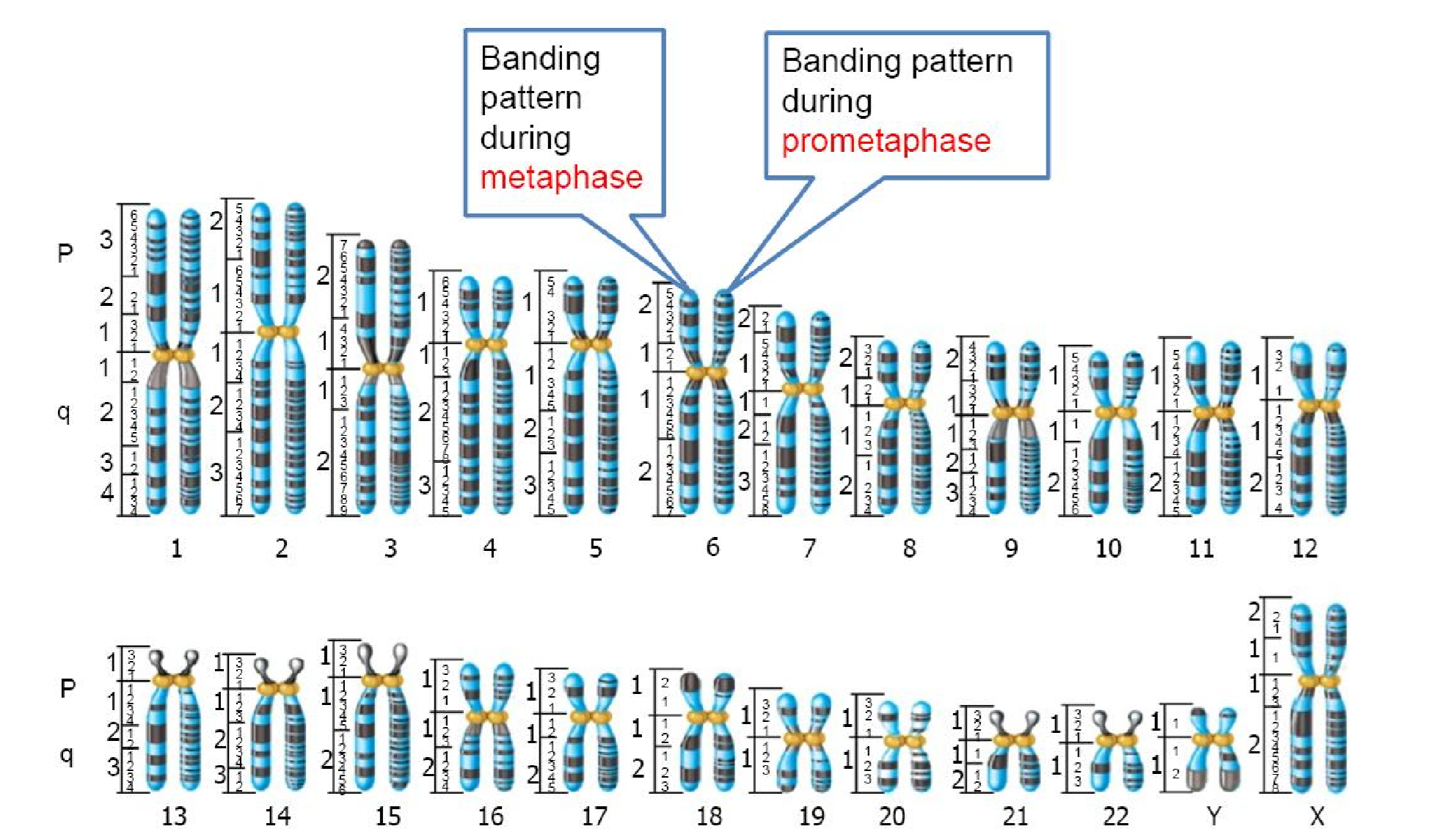
Number of G banding in Prometaphase > Number of G banding in metaphase
2. Function of Banding Patterns
- It distinguishes individual chromosomes from each other
- It detects changes in chromosome structure
- It reveals evolutionary relationships among the chromosomes of closely related species
二、Variation in Chromosome Structure
有两种方式可以使得染色体结构发生改变:
- genetic material 数目的变化:Deficiencies/Deletions;Duplications
- genetic material的重新排布: Inversions;Translocations
Deficiencies 缺失
A chromosomal deficiency occurs when a chromosome breaks and a fragment is lost
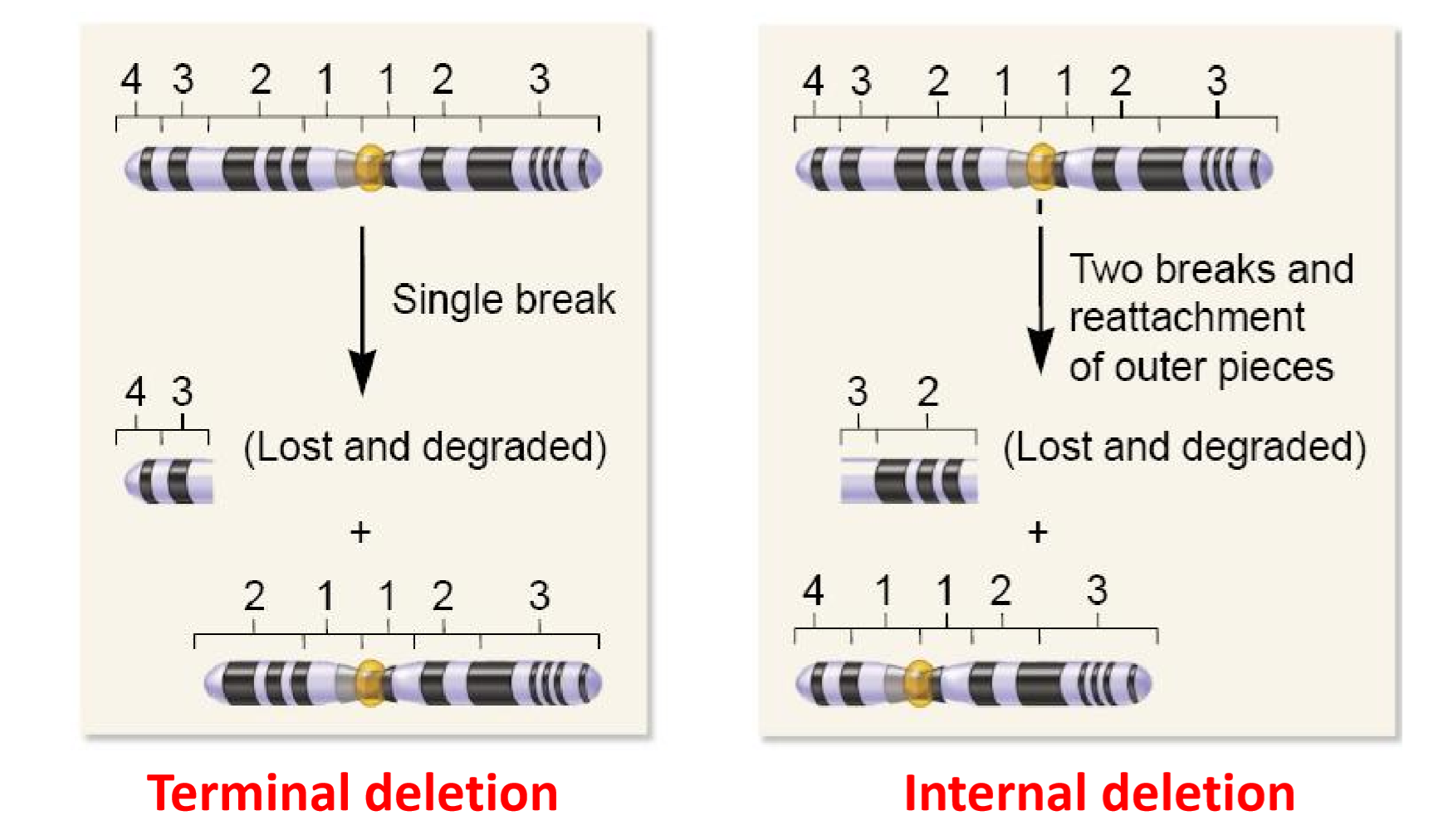
The deletion occurs most often as a random event during the formation of reproductive cells or in early fetal development. 与谱系遗传关系不大
About 10% of patients inherit the chromosome abnormality from an unaffected parent. In these cases, the parent carries a chromosomal rearrangement called a translocation.
1. 对性状的影响
染色体缺失对性状的影响主要取决于:
- 缺失数量的多少(size)
- Chromosomal material deleted
2. 缺失造成的性状改变
Prader‐Willi syndrome & Angelman syndrome
同时与染色体缺失与基因印记有关的疾病
Cat Cry Syndrome(猫叫综合征)
the disease Cat Cry Syndrome in humans. Caused by a deletion in the short arm of chromosome 5
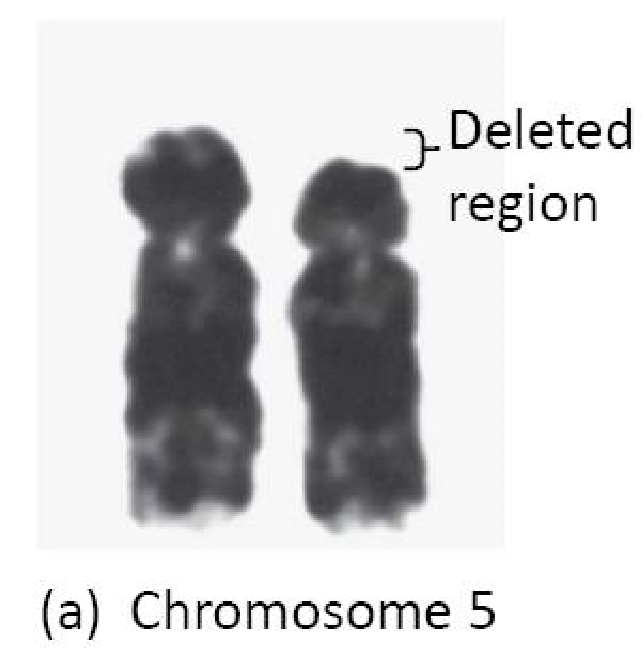
Duplication 重复
A chromosomal duplication is usually caused by abnormal events during recombination
Repetitive sequences can cause misalignment between homologous chromosomes. If a crossover occurs, nonallelic homologous recombination results
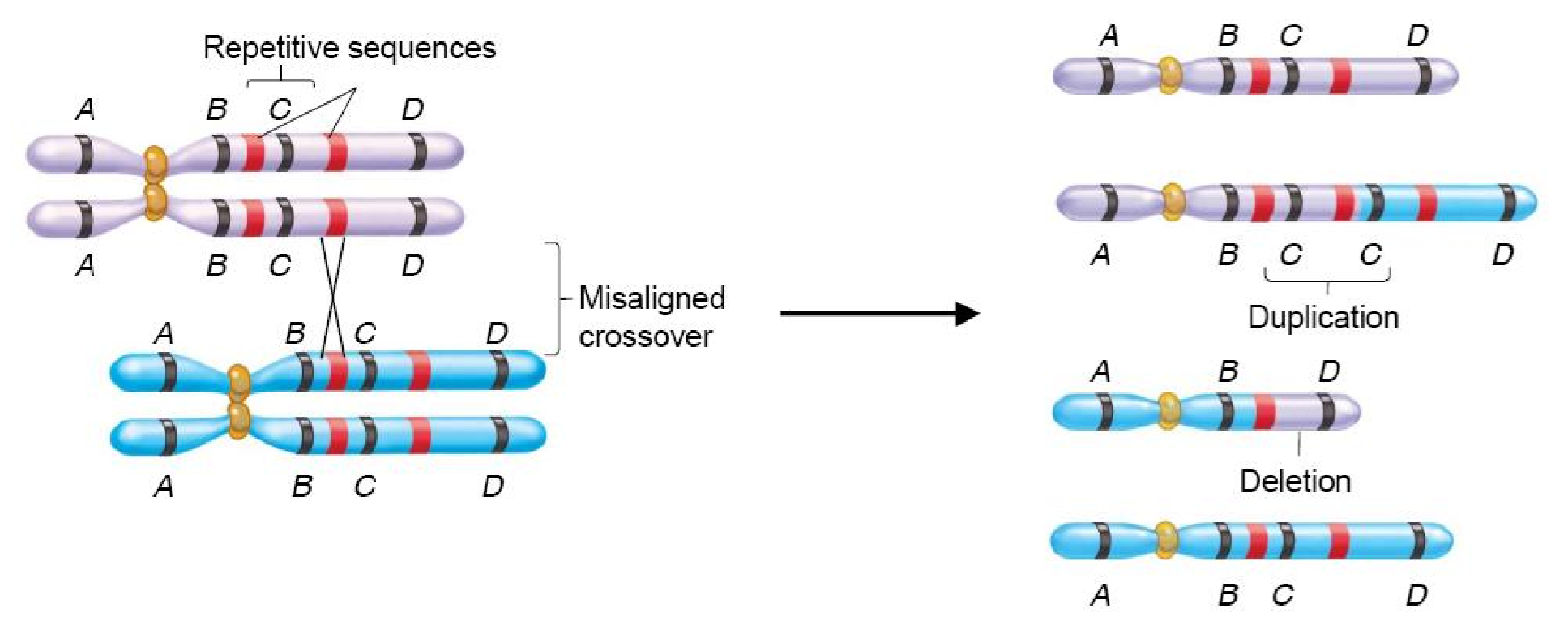
1. Duplication and homologous(同源的)
Over time, duplicated genes may accumulate mutations which alter their function
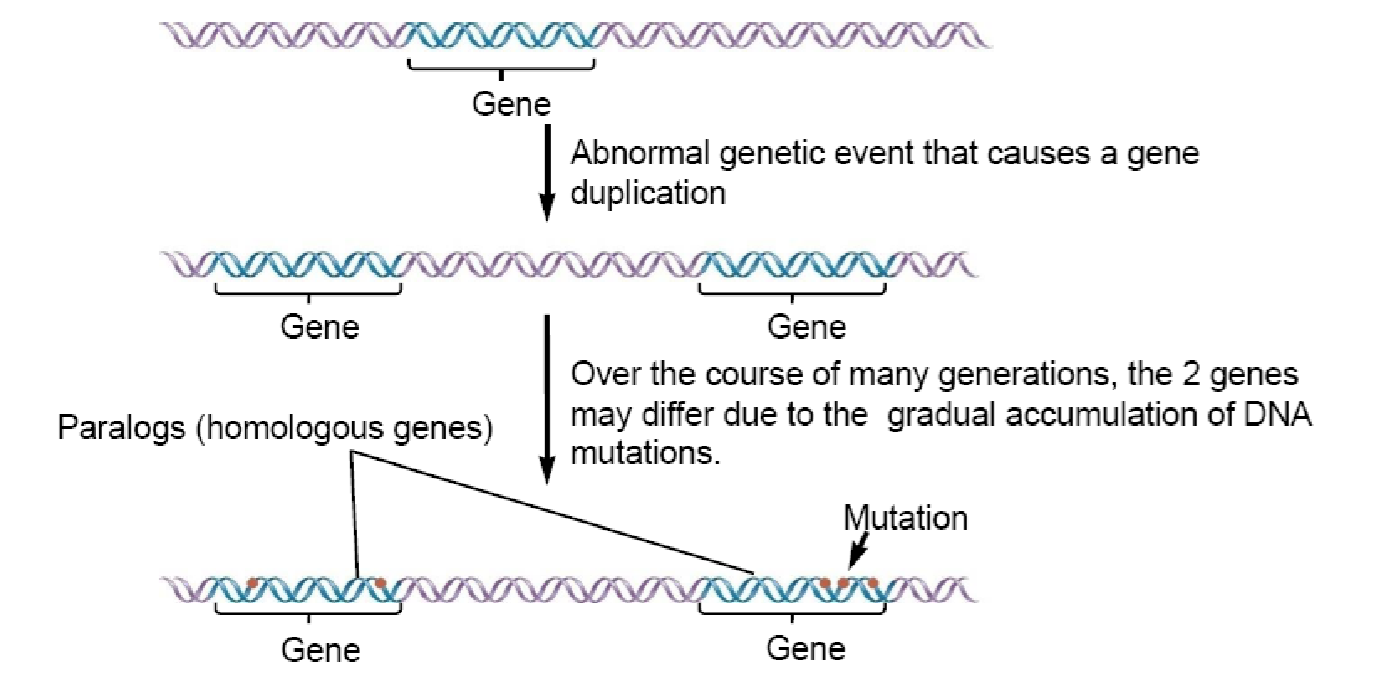
As a result, they may have similar but distinct functions
They are now members of a gene family
Two or more genes derived from a common ancestor are homologous
2. Globin(珠蛋白) Gene family
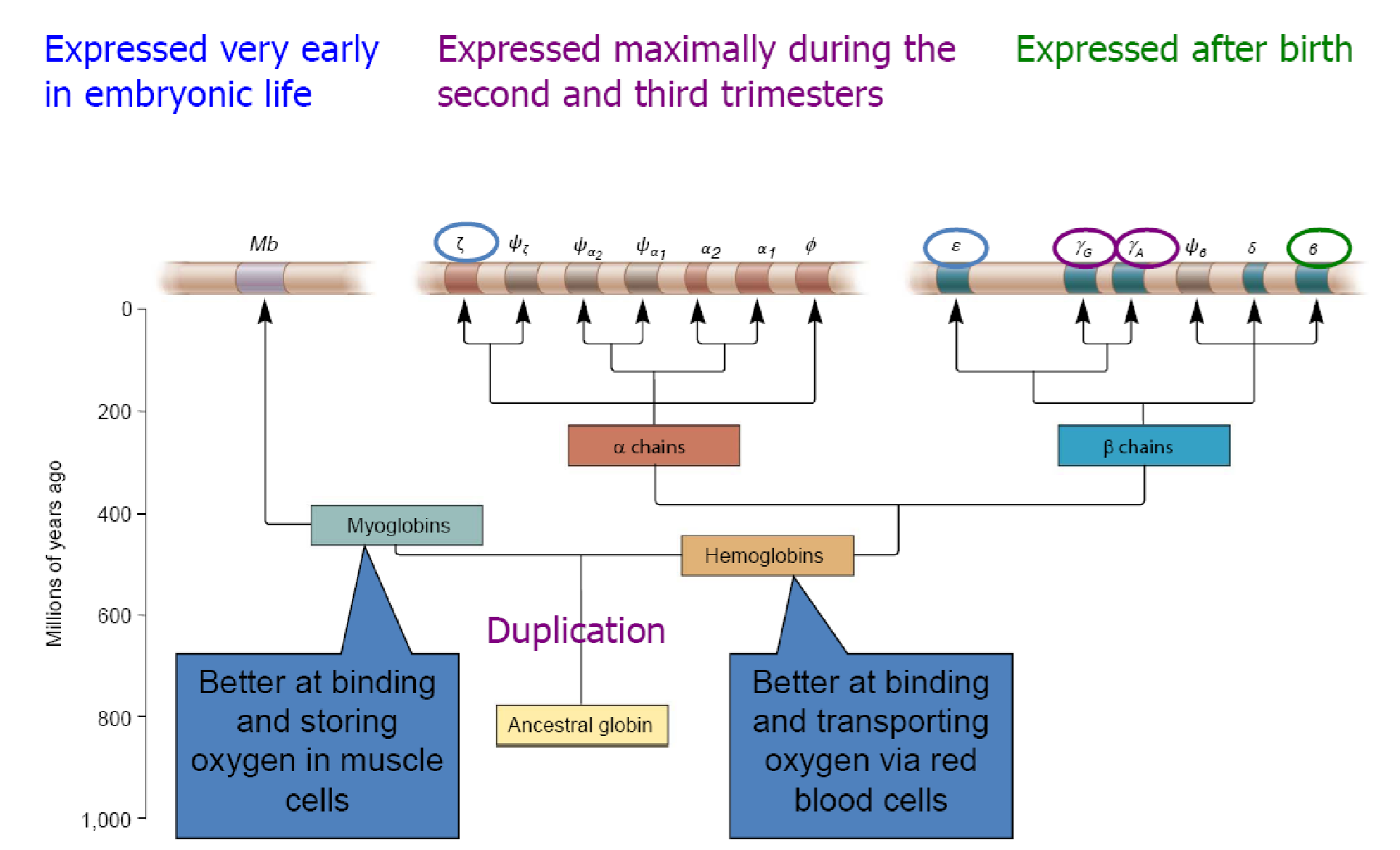
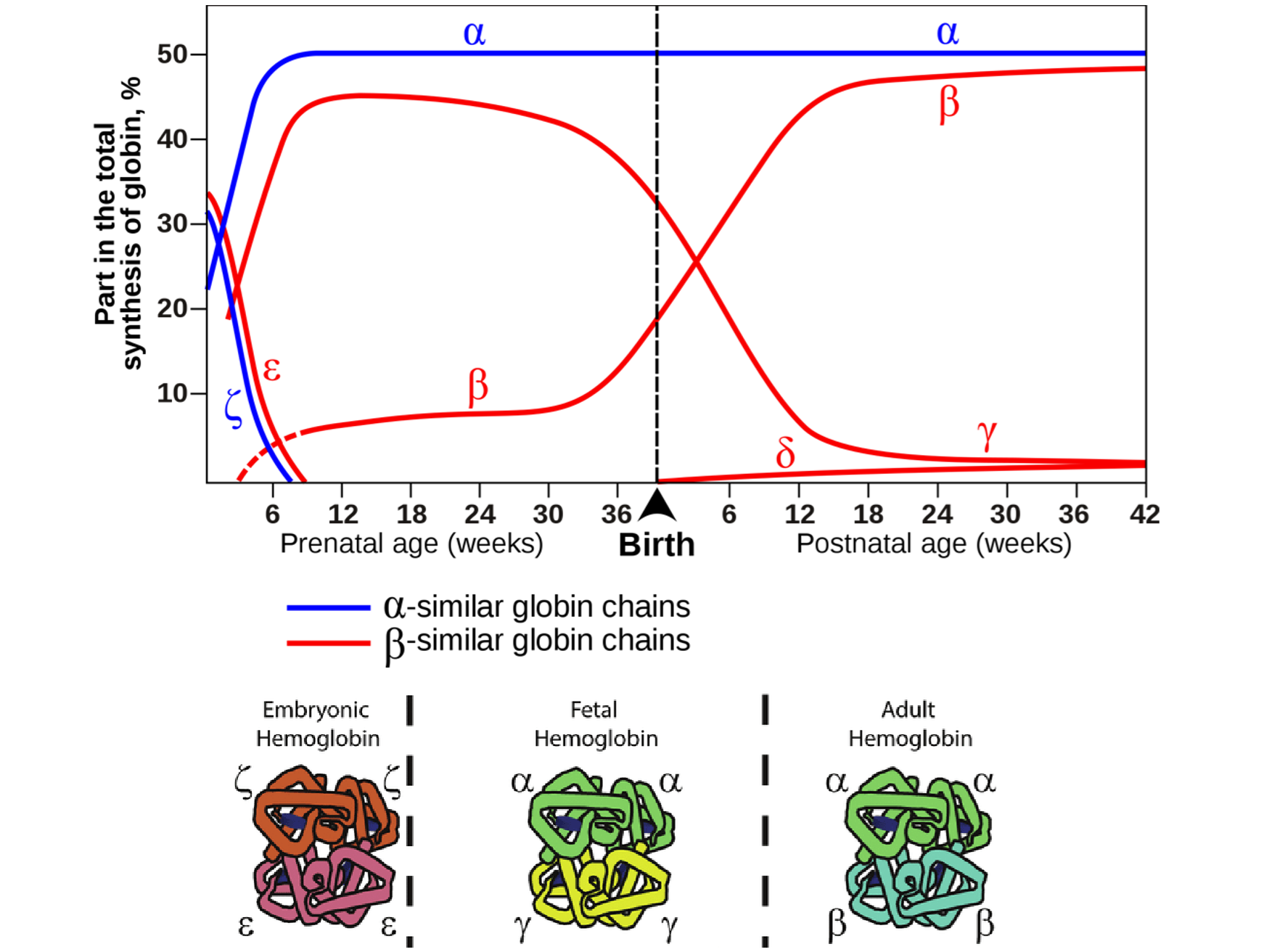
3. Copy Number Variation (CNV,拷贝数变异)
Definition
A segment of DNA that varies in copy number among members of same species
Copy number variation (CNV) is a phenomenon in which sections of the genome are repeated and the number of repeats in the genome varies between individuals in the human population
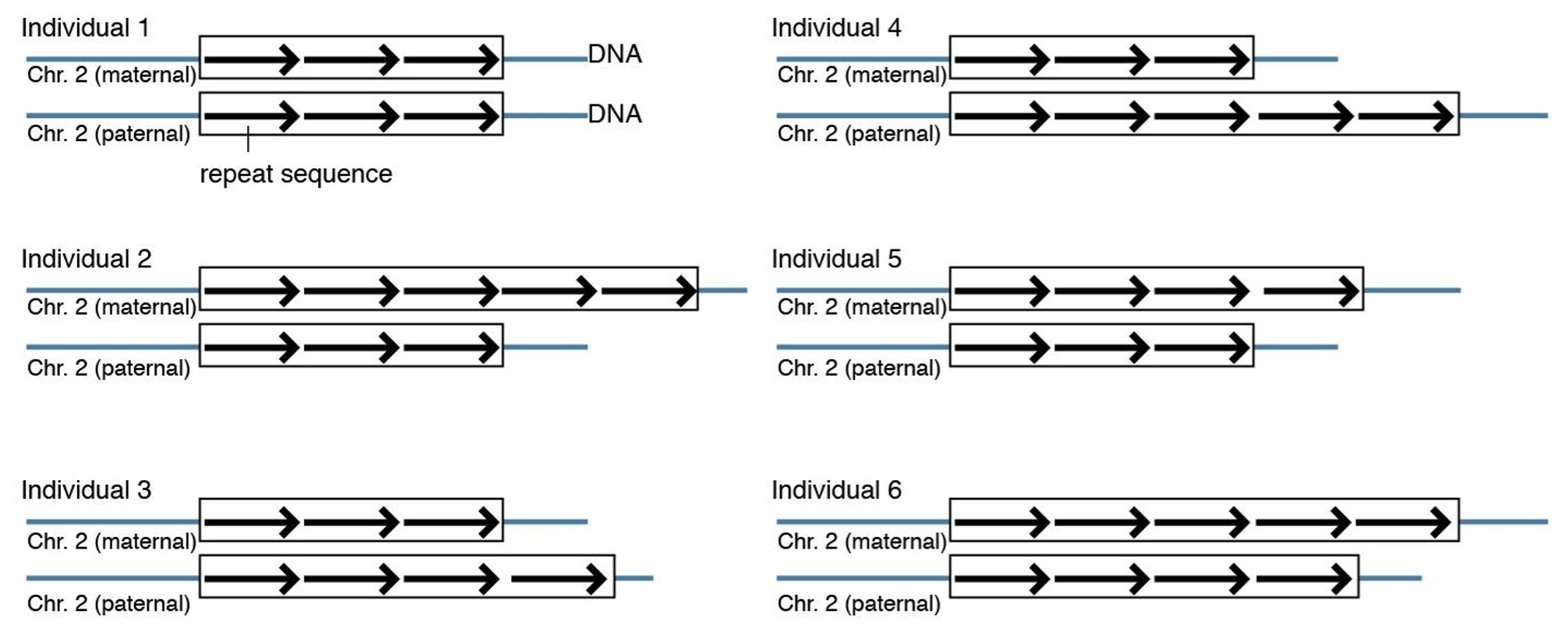
Surprisingly common in animals and plants
1‐10% of a genome may show CNV
Function
Associated with some human diseases and drug response
- Schizophrenia (精神分裂症)
- Autism(自闭症)
- susceptibility to infectious disease
- cancer
Inversions 倒位
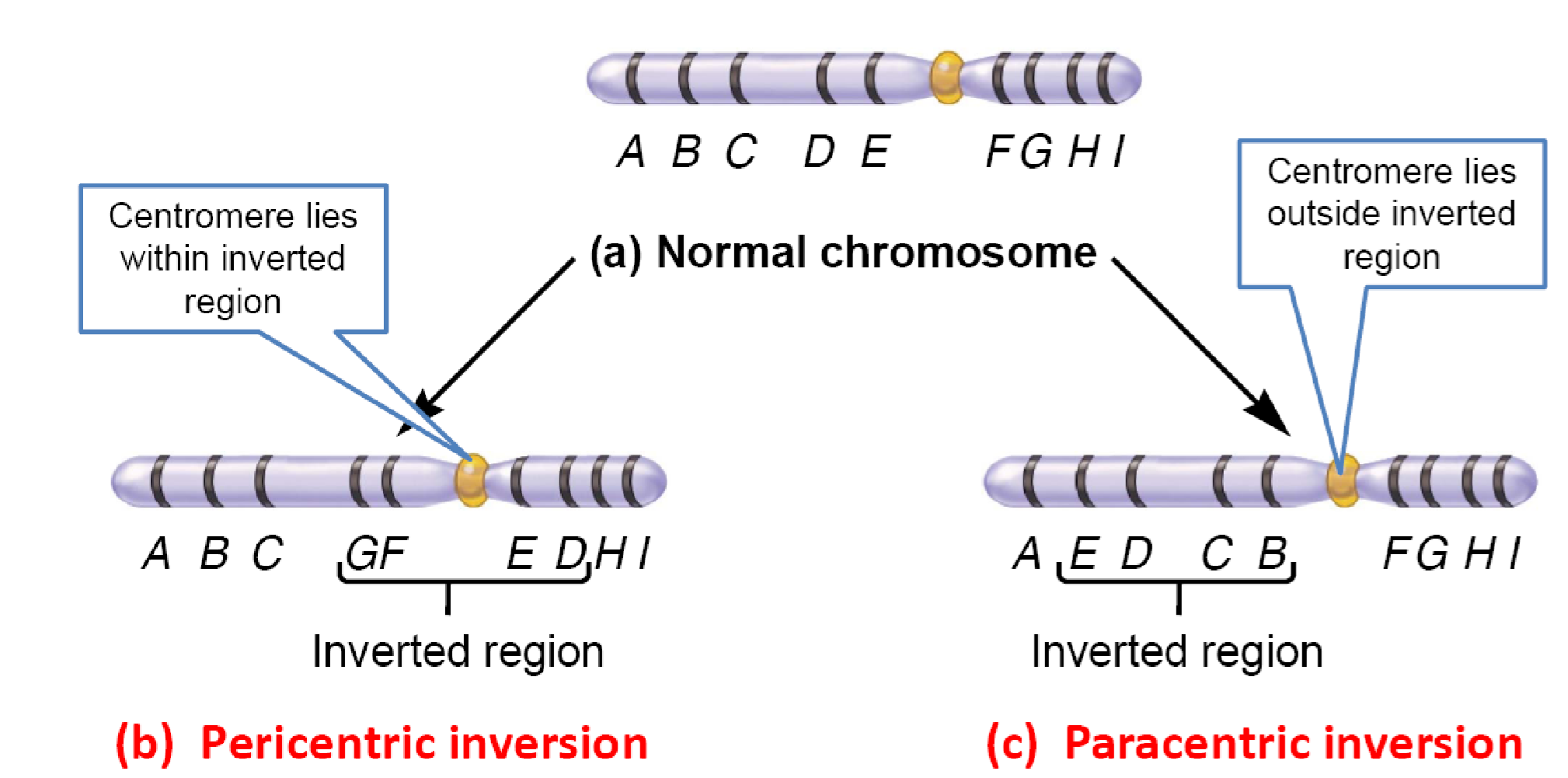
Pericentric inversion –> 臂间倒位;Paracentric inversion –> 臂内倒位
由于倒位引起的染色体总体遗传信息没有改变,因此大多数的倒位对表现型的影响不大
About 2% of the human population carries inversions that are detectable with a light microscope
Most of these individuals are phenotypically normal
However, some individuals with inversions may produce offspring with phenotypic abnormalities
1. Break point effect
An inversion break point occurs in a vital gene
2. Position effect
A gene is repositioned in a way that alters its gene expression
3. Inversion Heterozygotes
Inversion Heterozygotes $\rarr$ Individuals with one copy of a normal chromosome and one copy of an inverted chromosome
这样的受精卵在表现型上可能不会有太大的异常情况,但是其产生的子代可能出现异常
原因在于经过倒位之后的染色体,在交叉互换(crossing-over)的时候可能发生错误
在这种情况下:For the normal and inversion chromosome to synapse properly, an inversion loop must form
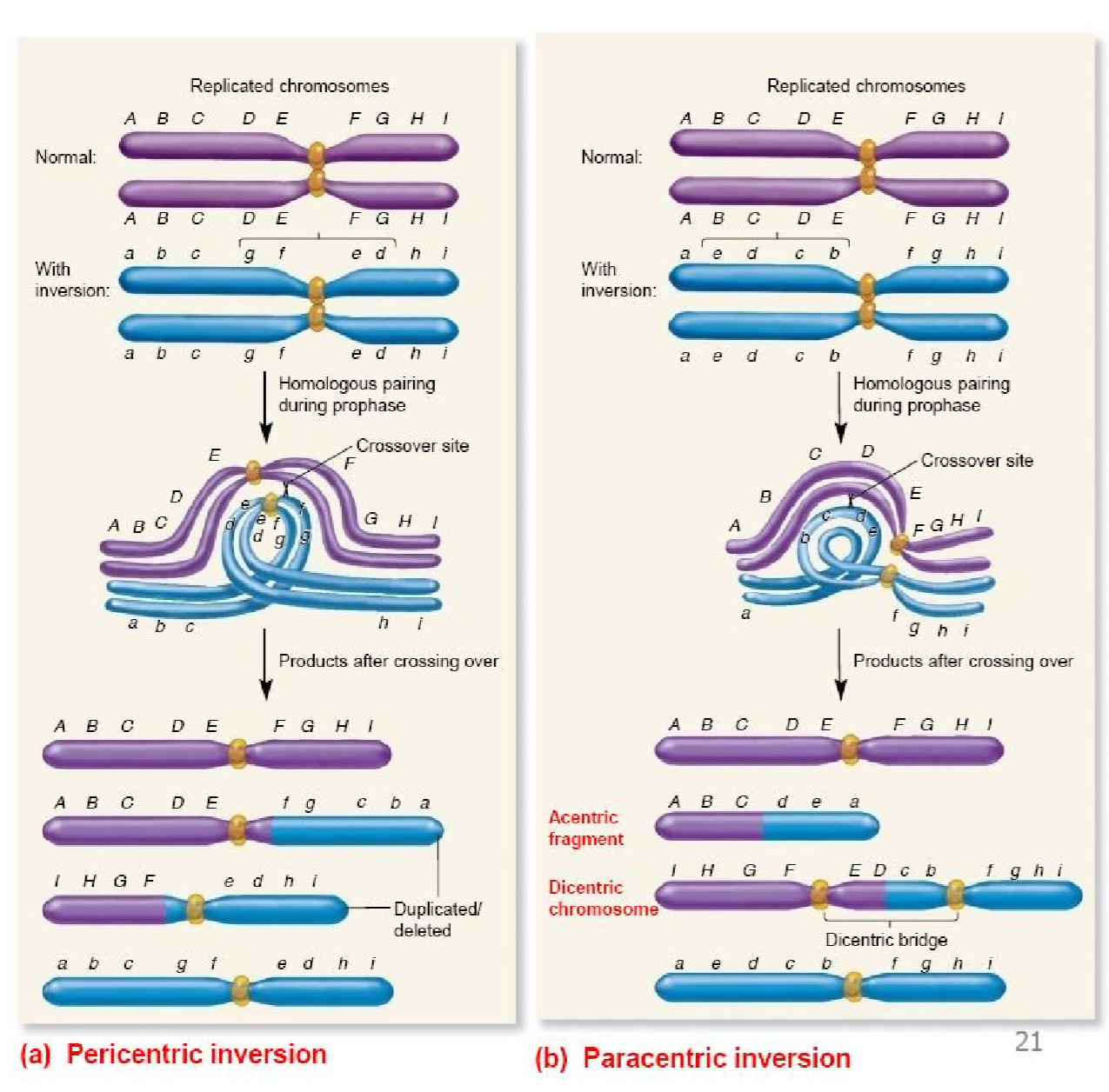
If a crossover occurs within the inversion loop, highly abnormal chromosomes are produced
Translocations 易位
A chromosomal translocation occurs when a segment of one chromosome becomes attached to another
In reciprocal translocations(相互易位,相互转座), two non‐homologous chromosomes exchange genetic material • Reciprocal translocations arise from two different mechanisms
- Chromosomal breakage and DNA repair
- Abnormal crossovers
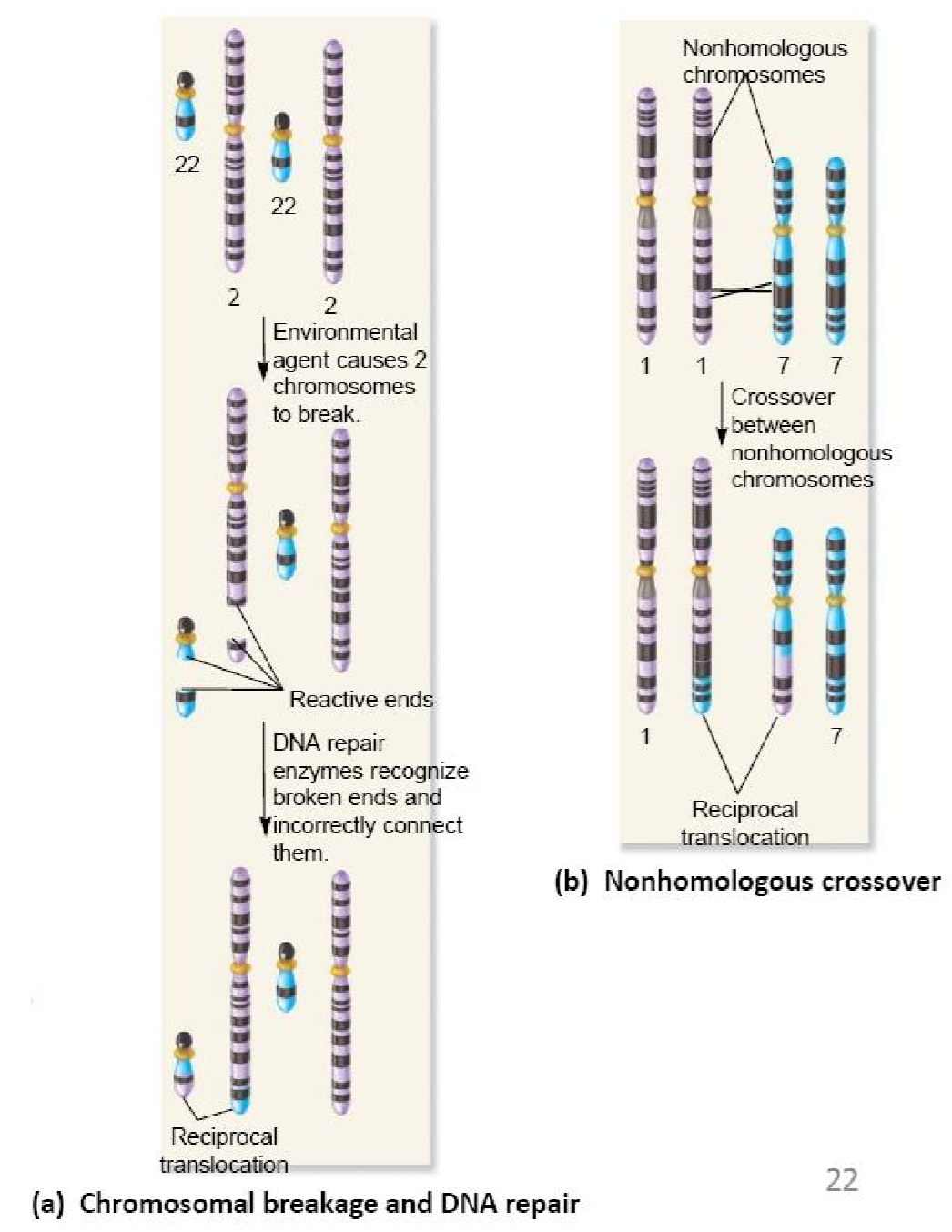
1. balanced translocations
Reciprocal translocations lead to a rearrangement of the genetic material, not a change in the total amount
Thus, they are also called balanced translocations
Reciprocal translocations, like inversions, are usually without phenotypic consequences
In a few cases, they can result in position effects
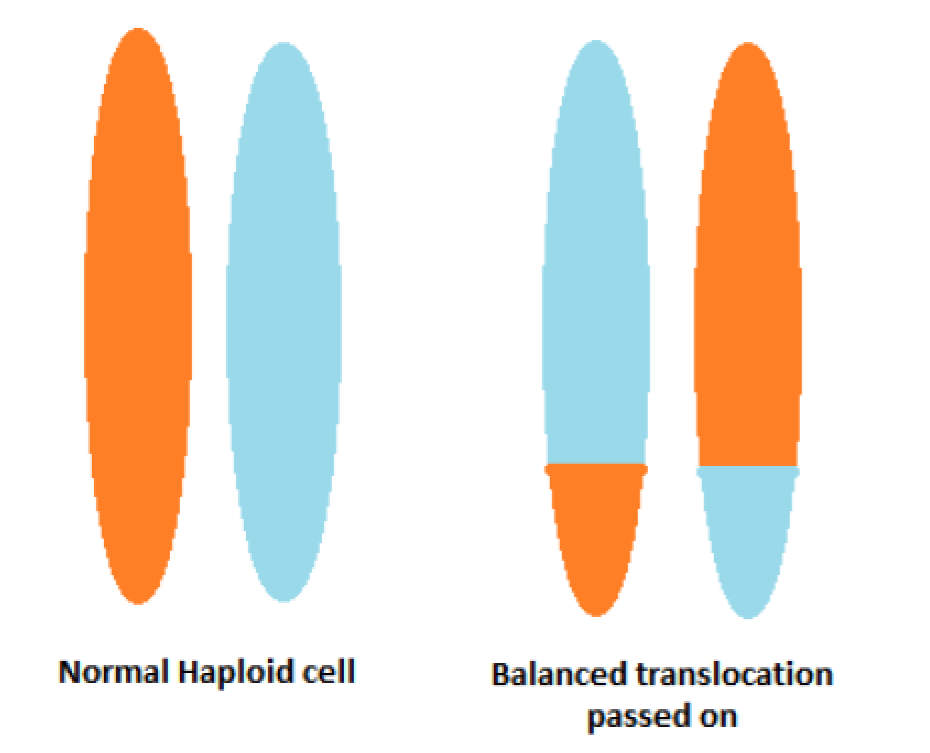
Individuals carrying balanced translocations have a greater risk of producing gametes with unbalanced combinations of chromosomes
This depends on the segregation pattern during meiosis I
During meiosis I, homologous chromosomes synapse with each other
For the translocated chromosomes to synapse properly, a translocation cross must form
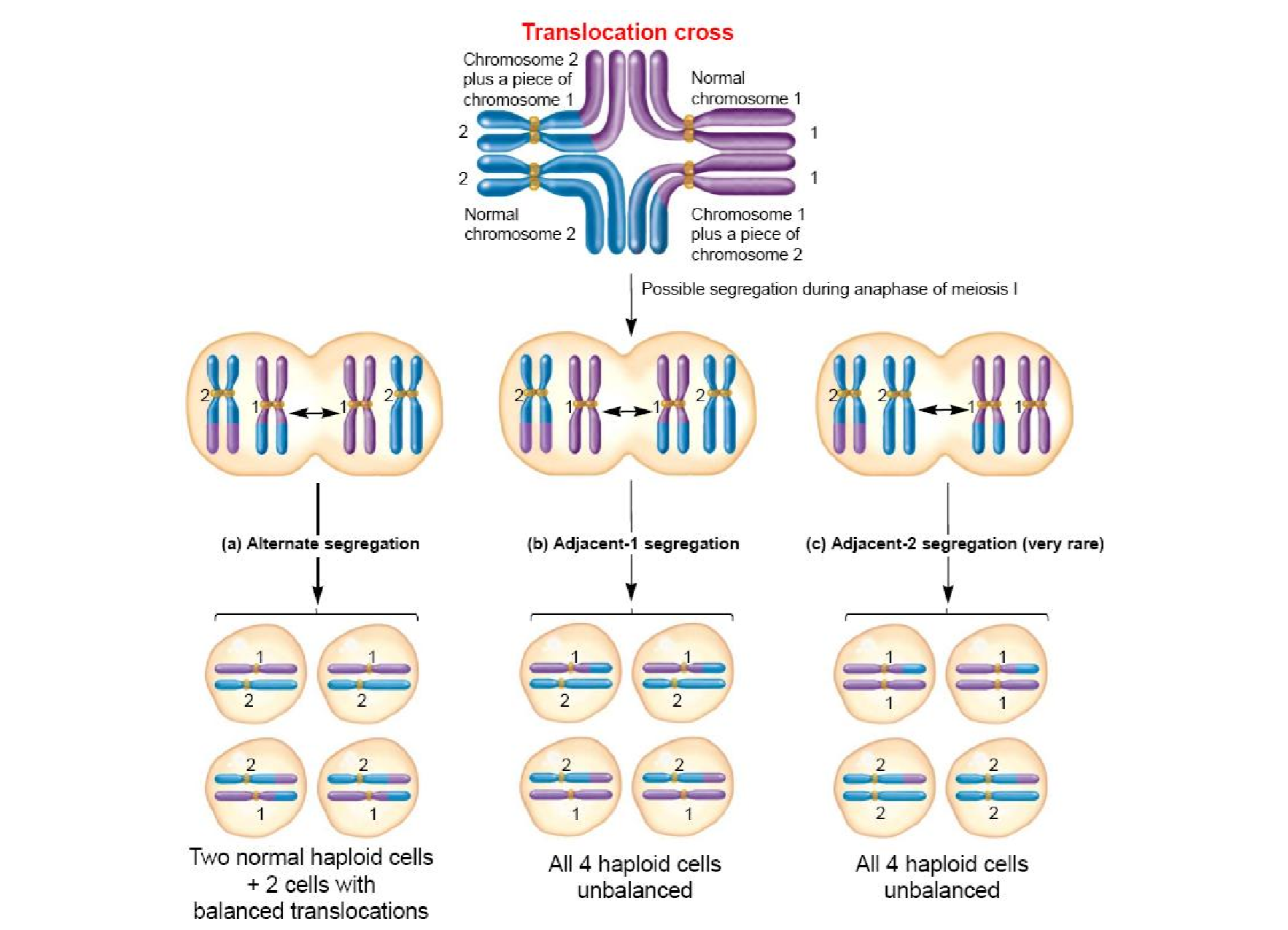
2. unbalanced translocations
In simple translocations the transfer of genetic material occurs in only one direction
These are also called unbalanced translocations
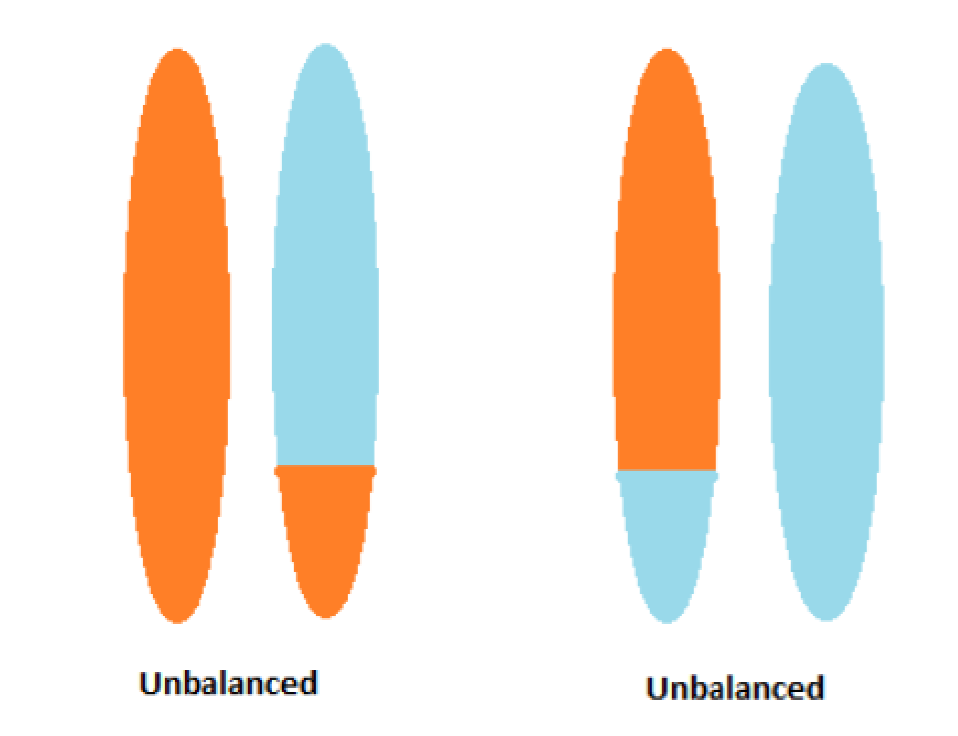
三、Variation in Chromosome number
Euploidy and Aneuploidy
Chromosome numbers can vary in two main ways
Euploidy (整倍体)
Variation in the number of complete sets of chromosome
occur occasionally in animals and frequently in plants –
Aneuploidy (非整倍体)
- Variation in the number of particular chromosomes within a set
- abnormal conditions
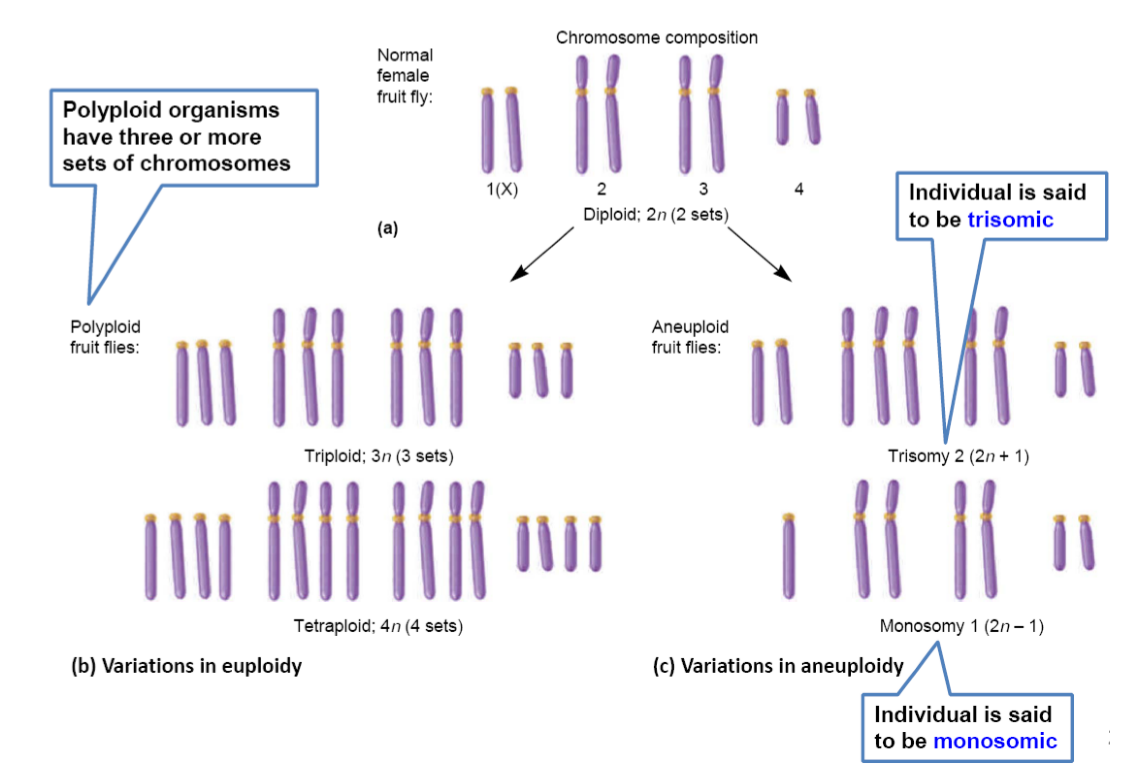
1. Aneuploidy
Aneuploidy commonly causes an abnormal phenotype
由于性状被数千个基因所影响,而一条染色体就携带了数百~数千个基因。非整倍体的结果是 imbalance in the amount of gene products,例如多了一条染色体,gene product的产量就是150%

Alterations in chromosome number occur frequently during gamete formation
About 5‐10% of embryos have an abnormal chromosome number
Indeed, ~ 50% of spontaneous abortions are due to such abnormalities
一般情况,出现这种异常情况,在胚胎发育的过程中就会流产,但是也有发生了变异后,可以生存的个体:

2. Euploidy
动物基本是二倍体,多倍体在植物内很常见,但是多倍体对于动物来说一般是致死的
Some euploidy variations are naturally occurring
Female bees are diploid
Male bees (drones) are monoploid (Contain a single set of chromosomes)
3. endopolyploidy 核内多倍性
Liver Cells
In many animals, certain body tissues display normal variations in the number of sets of chromosomes
• Diploid animals sometimes produce tissues that are polyploid
Liver cells, for example, can be triploid, tetraploid or even octaploid (8n)
May enhance ability of cell to produce specific gene products
Polytene chromosomes 多线染色体
Polytene chromosomes (also referred to as ‘salivary gland chromosomes’) of insects provide an unusual example of natural variation in ploidy
Polytene chromosomes are large chromosomes which have thousands of DNA strands.
Polytene chromosomes的存在使得该细胞具有较高的基因表达量
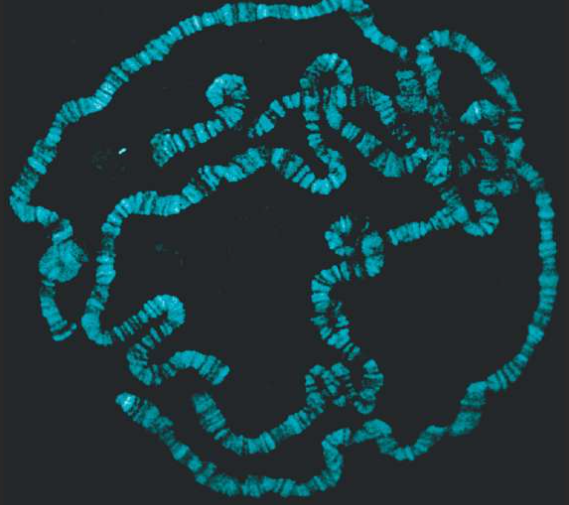
They are produced when repeated rounds of DNA replication without cell division forms a giant chromosome. Thus polytene chromosomes form when multiple rounds of replication produce many sister chromatids which stay fused together.
plants commonly exhibit polyploidy
In contrast to animals, plants commonly exhibit polyploidy
30‐35% of ferns and flowering plants are polyploid
Many of the fruits and grain we eat come from polyploid plants
In many instances, polyploid strains of plants display outstanding agricultural characteristics
They are often larger in size and more robust(强壮)
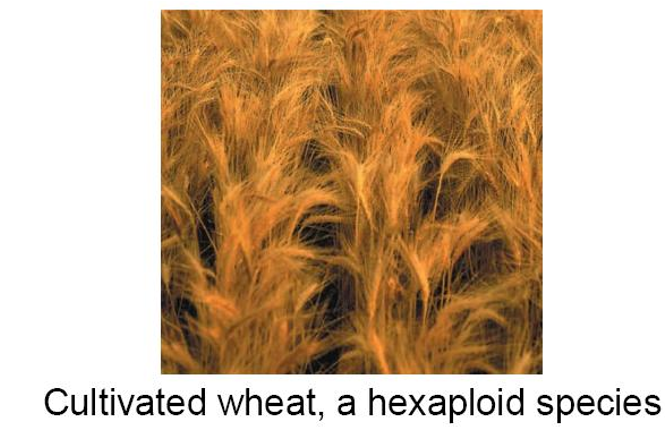
4. Polyploidy and sterile
Polyploids having an odd number of chromosome sets are usually sterile
These plants produce highly aneuploid gametes
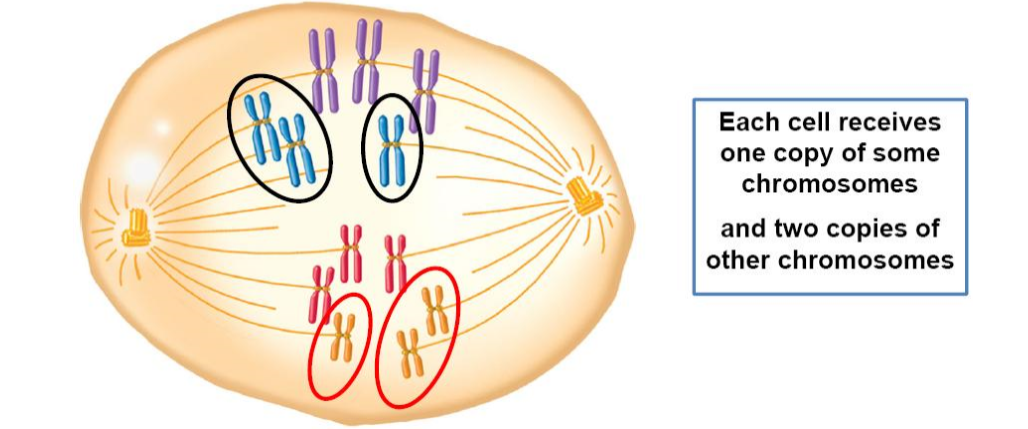
Sterility is generally a detrimental trait ,however, it can be agriculturally desirable because it may result in:
- Seedless fruit
- Seedless watermelons and bananas (3n)
- Asexually propagated by human via cuttings
- Seedless flowers
- Marigold flowering plants (3n)
Ways to Produce Variations in Chromosome Number
There are three natural mechanisms by which the chromosome number of a species can vary
Meiotic nondisjunction——减数分裂分离异常
Mitotic abnormalities——有丝分裂分离异常
Interspecies crosses——种间杂交
1. Meiotic Nondisjunction
Nondisjunction refers to the failure of chromosomes to segregate properly during anaphase(后期)
• Meiotic nondisjunction can produce haploid cells that have too many or too few chromosomes
If such a gamete participates in fertilization. The resulting individual will have an abnormal chromosomal composition in all of its cells
在M1或M2的后期都可以出现
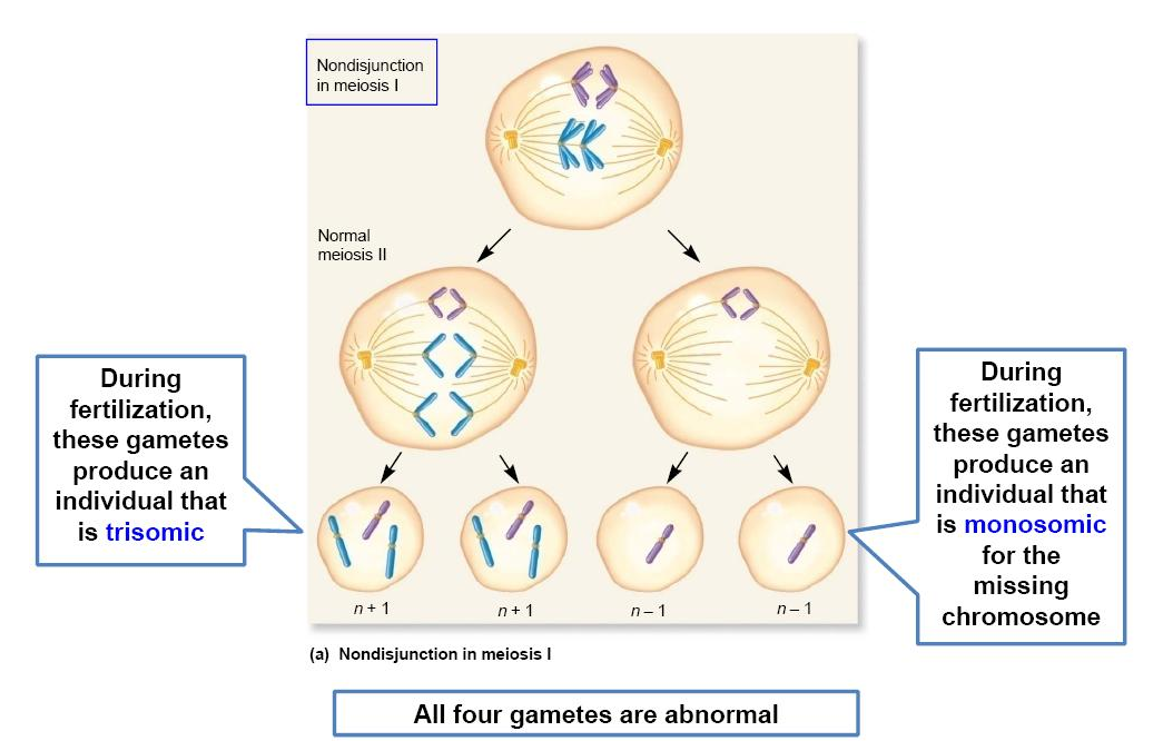
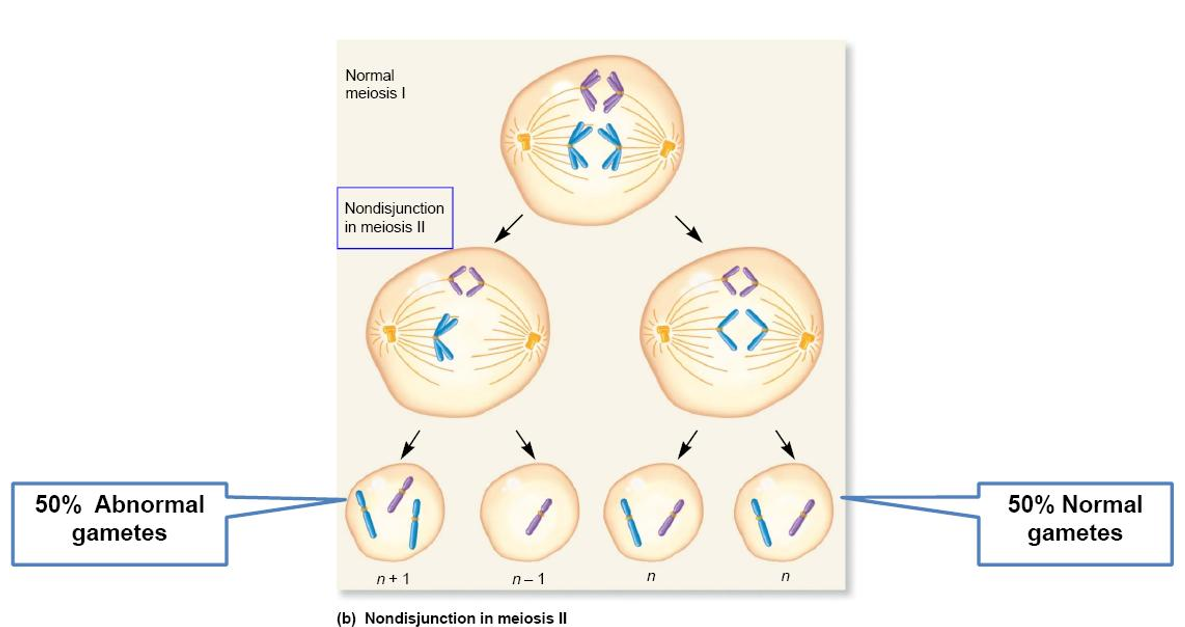
2. Mitotic Abnormalities
Mitotic nondisjunction
Sister chromatids separate improperly. This leads to trisomic and monosomic daughter cells
Chromosome loss
One of the sister chromatids does not migrate to a pole. This leads to normal and monosomic daughter cells
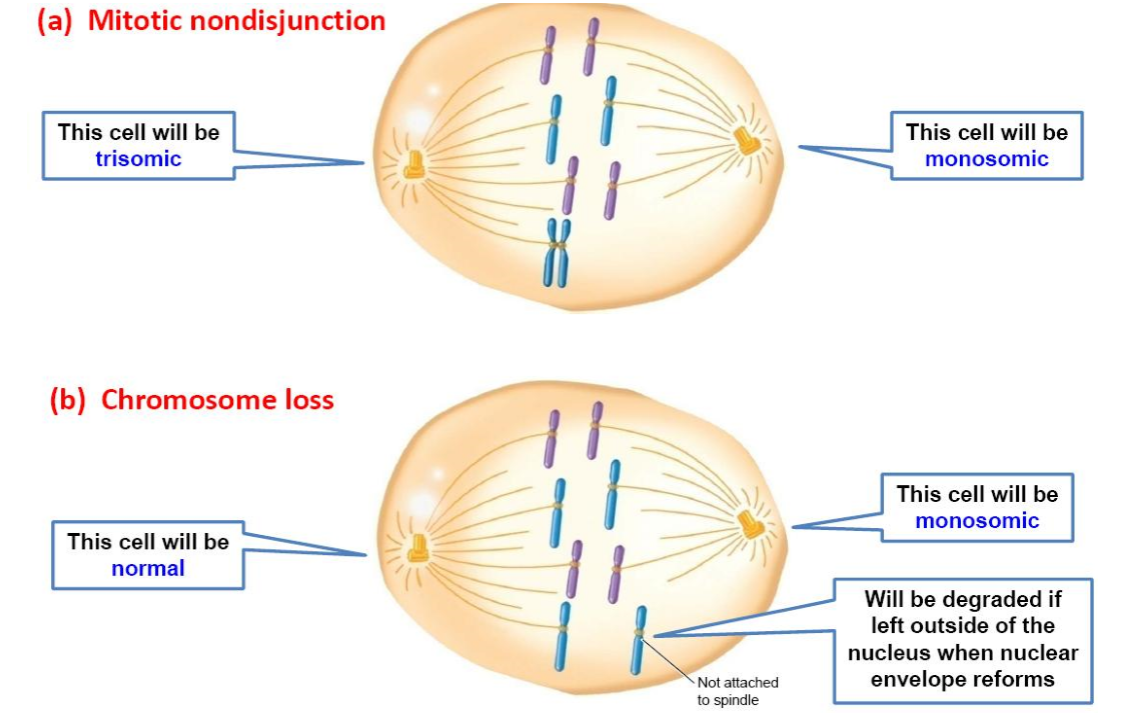
3. Interspecies Crosses
A much more common mechanism for changes in the number of sets of chromosomes is alloploidy (异源多倍性)
In two very closely related species, the number and types of chromosomes might be very similar
• If the two closely related species have the same number of chromosomes that are similar in size similar banding patterns
Evolutionary related chromosomes from two differrent species are termed homeologous chromosomes
It is the result of interspecies crosses
Most likely occurs between closely related species

